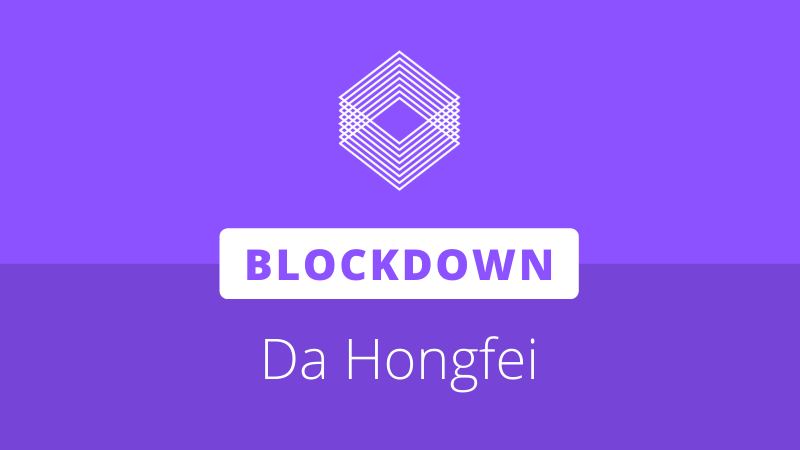
On April 16th, Neo founder, Da Hongfei, delivered an online presentation at the BlockDown 2020 virtual conference. The presentation was entitled Blockchain in a Post-Pandemic World, which focused on how blockchain may solve potential long-term problems that result from the coronavirus pandemic. Da also discussed new features in Neo3, and gave an update on the progress of Neo’s cross-chain interoperability protocol.
Blockchain in a post-pandemic world
After first assuring the audience that all of the Neo Global Development (NGD) representatives in Shanghai, Seattle, Zurich, and Seoul are healthy, Da began to breakdown issues that have arisen as a result of the global pandemic, outlining inflation and deglobalization as two major concerns.
Beginning with inflation, Da discussed the massive amounts of fiat capital injected into economies to help the liquidity of markets. “These trillions of dollars are newly created monies that will definitely help the capital market, but in the meantime it is also a source of inflation where everyone will be impacted,” Da said.
For this reason, Da stated his belief that fund managers and institutional investors will begin to look at crypto assets as an alternative investment choice. In his opinion, “there probably there won’t be anything better than crypto assets” citing the mathematical limits of cryptocurrencies as protection against devaluation by inflation.
Another consequence of the pandemic is deglobalization or the reduced trade between countries as nations seek to relocate supply chains back to their home soil. Da noted that the world was already experiencing deglobalization before the dawn of the coronavirus, citing the trade war between China and the USA, and President Trump’s promise to bring manufacturing jobs back to the United States as examples.
“This pandemic just escalated this conflict between countries. Some Western countries suddenly realized their lack of ability to provide essential medical supplies to their citizens. They cannot produce masks or ventilators in time… their manufacturing is just not in their country. It’s either in China, maybe in other Asian countries. So they realised they want to bring back that essential manufacturing ability to their countries.”
However, world leaders are not just bothered by the fact that manufacturing plants may be in another country, Da suggested. In his opinion, the underlying fundamental issue is the reliance on countries with different political systems, values, and ideologies, leading to a situation of distrust.
According to Da, blockchain can remedy this issue due to three core strengths.
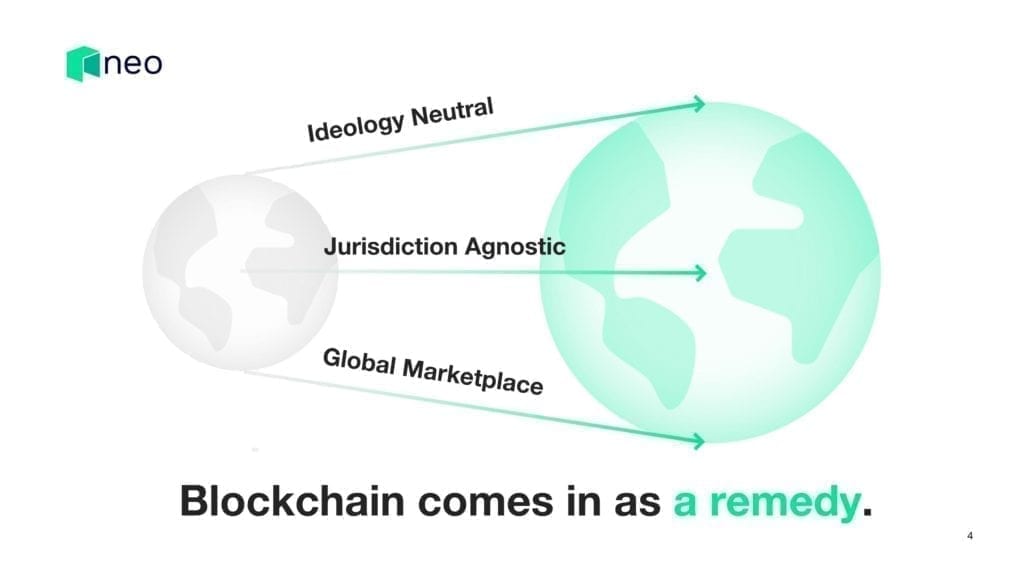
First, blockchain technology is ideology neutral and isn’t backed by capitalism, socialism, or any form of government. Second, assets or business logic existing on blockchain and managed by a smart contract are not directly affected by the jurisdiction of the entity behind the smart contract. Third, as more and more assets are stored on-chain, blockchain can eventually become a global marketplace.
For these reasons, Da believes people will be able to trade without the need to trust one another, thus addressing the core underlying issue in the current conflict.
Is blockchain ready?
Despite his optimism that blockchain can solve many issues, Da doesn’t believe the technology is ready for mass adoption. “I don’t think today’s blockchain can fulfil the mission to hold the future human economy on top of it,” Da mused. He then outlined the three areas blockchain needs to improve upon: interoperability, tokenization, and adaption.
Interoperability, or the ability to move assets and communicate across networks, is a crucial need for blockchains moving forward. Although there are various interoperability protocols currently existence, Da pointed out that they primarily focus on asset transfer, which is only one part of puzzle. Rather, Da envisions a solution that allows both the free flow of assets across chains, along with frictionless cross-chain interactions and the calling of smart contracts from one chain to another. This will create a network of blockchains that Da calls the “Next Generation Internet” (NGI).
Once the NGI is established, Da believes asset tokenization will be a fundamental driving force of a programmable digital economy. “If you believe blockchain networks will be the underlying foundation for the real human economy in the future, we definitely need to tokenize a lot of things – digital assets as well as physical assets.”
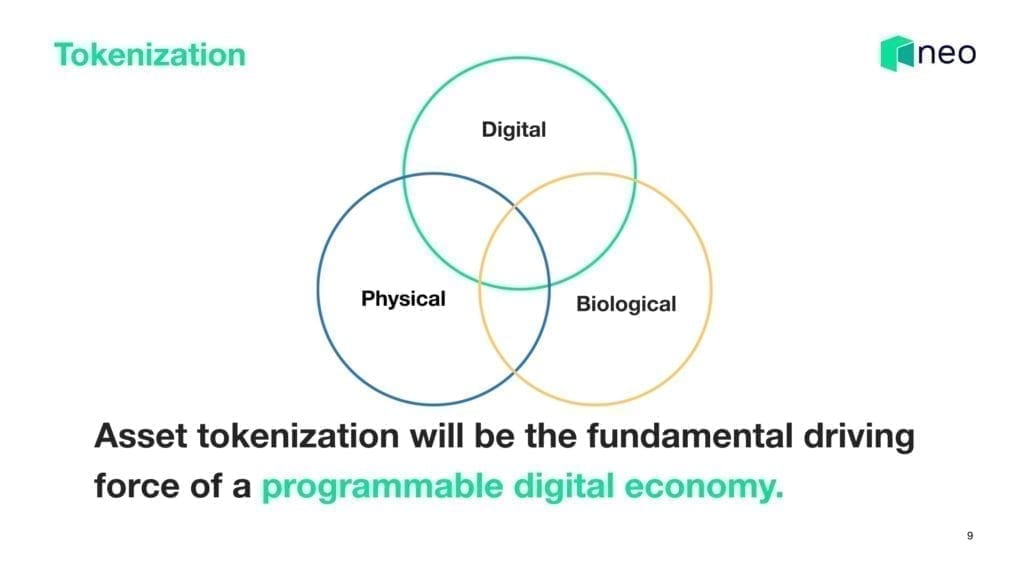
Examples of assets that would require tokenization include collectibles, securities, fiat currencies, and physical items. These can then be traded within the programmable economy, or global marketplace, that would link the digital, physical, and even the biological realms.
Lastly, to Da suggested that in order to support the needs of the real-world economy, blockchains need to be adaptive: “To be decentralized is not the sole goal of blockchain. You have to make different design choices. Those choices are not binary.”
Da outlined considerations regarding centralized vs decentralized systems, permissioned vs permissionless systems, and methods of on-chain vs off-chain governance. As different applications require different solutions, he noted a desire to see more variance in blockchain design choices in order to cater to the many use cases of the human economy.

Neo3 and looking forward
Moving onto Neo3, Da introduced some of its flagship features including built-in oracles, the NeoFS distributed storage network, and the NeoID digital identity standard. He also described other improvements such as smart contract optimizations, a smooth developer experience, and protocol enhancements.
A significant reveal from the presentation was that Neo’s cross-chain interoperability protocol, currently under development, is already working with BTC, ETH, and ONT blockchains on TestNet environments. Da said, “with Neo3, developers and users will have the ability to be able to transfer BTC, ETH, ONT, and other assets between different blockchains.”
Further, the migration from Neo2 to Neo3 will likely be coordinated using the cross-chain protocol to transfer assets between chains in a gradual manner.
“With this migration, we can set an example or model for other blockchains to evolve from their older version to a newer version. Or, [they] can even merge two different blockchains to a new one using this cross-chain protocol migration model.”
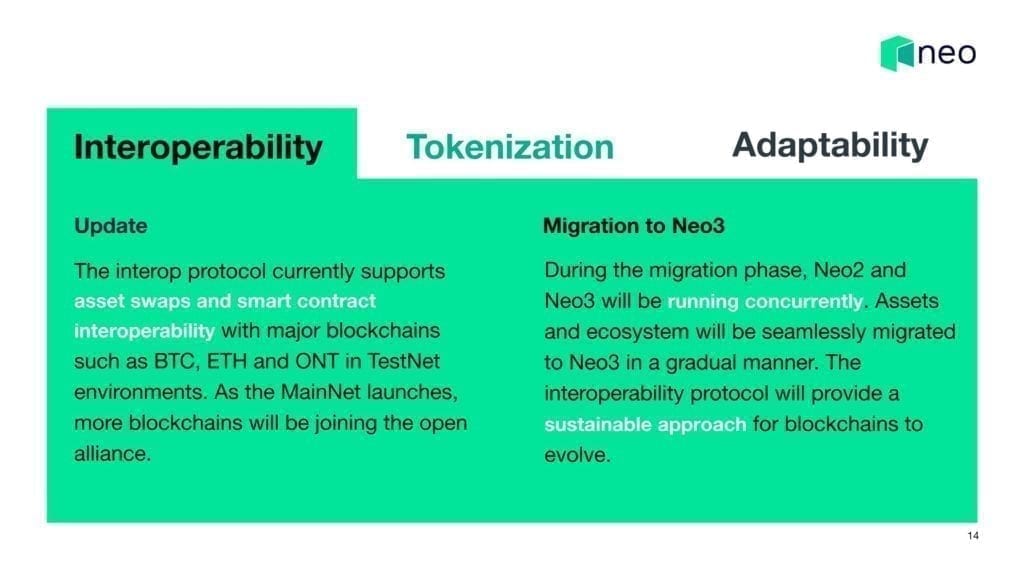
Next steps for Neo were said to include a continued focus on decentralization while integrating a hybrid on-chain/off-chain governance model.
Da concluded the presentation by saying, “today’s blockchain technology is not ready to fulfil the mission. We still need to improve interoperability, tokenization, and adaptability. So as long as we can improve in those three aspects, we will see a bright future. And, may the fittest blockchain survive.”





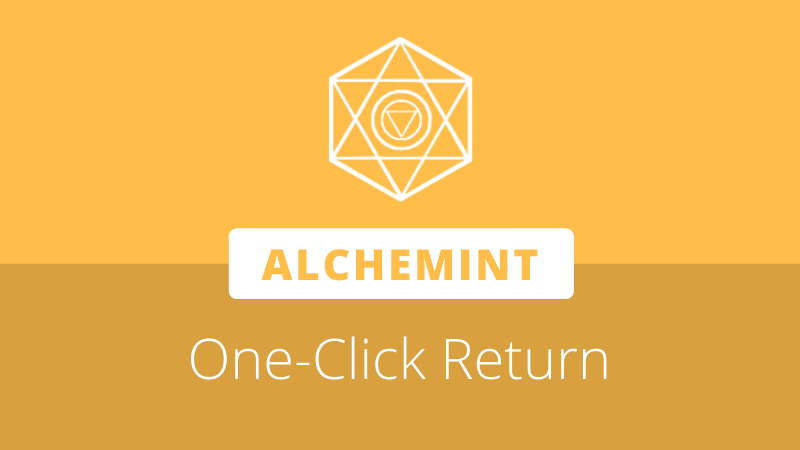
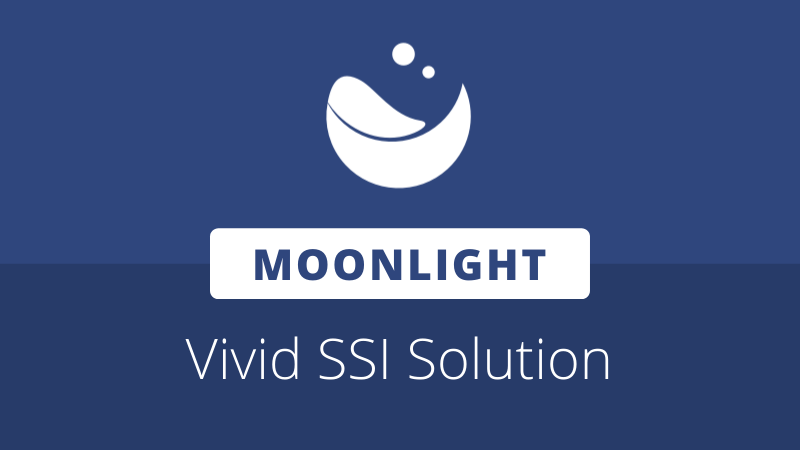
About The Author: Dylan Grabowski
Dylan is a reformed urban planner with a passion for covering the Neo ecosystem. His objective as a writer for Neo News Today is to report news in an objective, fact-based, non-sensational manner. When not behind a computer screen, he can be found in the mountains rock climbing. Find Dylan on Twitter (@GrabowskiDylan).
More posts by Dylan Grabowski